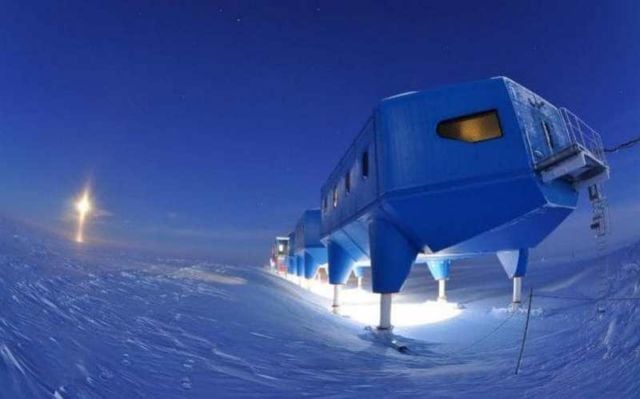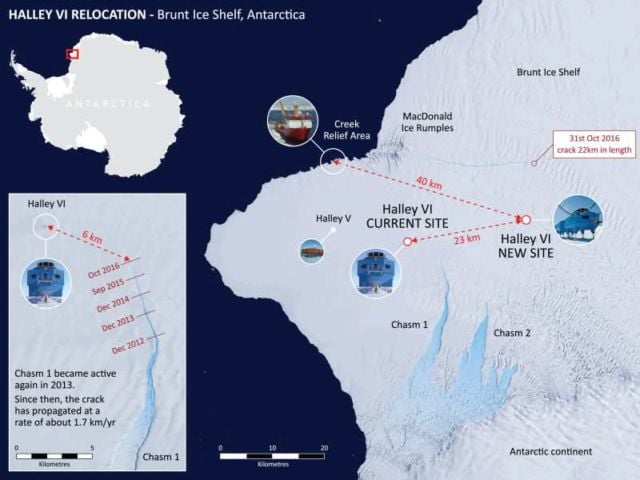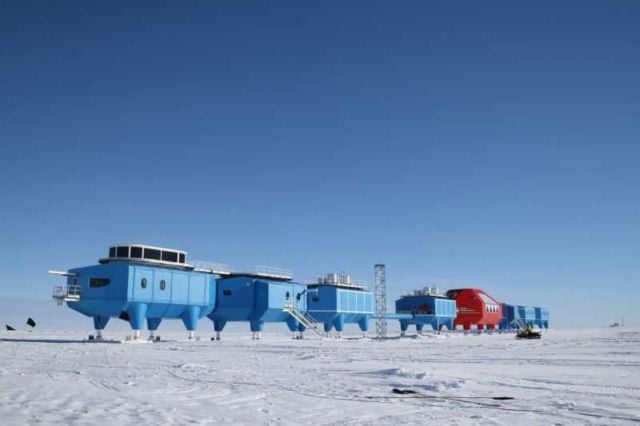British Antarctic Survey is moving its Halley VI Research Station 23 km across the Brunt Ice Shelf, to be safe from an encroaching fissure in the ice.
British Antarctic Survey is getting ready to move its Halley VI Research Station 23 km across the ice. This is the first time that the station, which has a re-locatable design to cope with life on a floating ice shelf, has been moved since it was towed from its construction site to its present location in 2012.
The station sits on Antarctica’s 150 m thick Brunt Ice Shelf. This floating ice shelf flows at a rate of 0.4 km per year west towards the sea where, at irregular intervals, it calves off as icebergs. Halley is crucial to studies into globally important issues such as the impact of an extreme space weather event (which could cause an economic loss of $6 – 42 billion a day), climate change, and atmospheric phenomena. It was scientific investigations from this location that led to the discovery of the Antarctic Ozone Hole in 1985.
Tim Stockings is Director of Operations at British Antarctic Survey. He says:
“Halley was designed and engineered specifically to be re-located in response to changes in the ice. Over the last couple of years our operational teams have been meticulous in developing very detailed plans for the move and we are excited by the challenge. Antarctica can be a very hostile environment. Each summer season is very short – about 9 weeks. And because the ice and the weather are unpredictable we have to be flexible in our approach. We are especially keen to minimise the disruption to the science programmes. We have planned the move in stages – the science infrastructure that captures environmental data will remain in place while the stations modules move.”
Images credit British Antarctic Survey








Leave A Comment